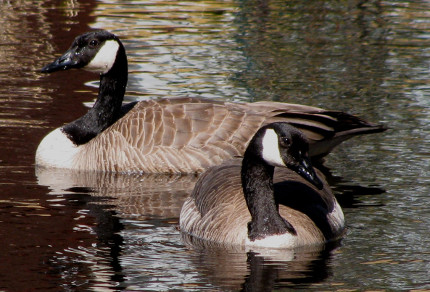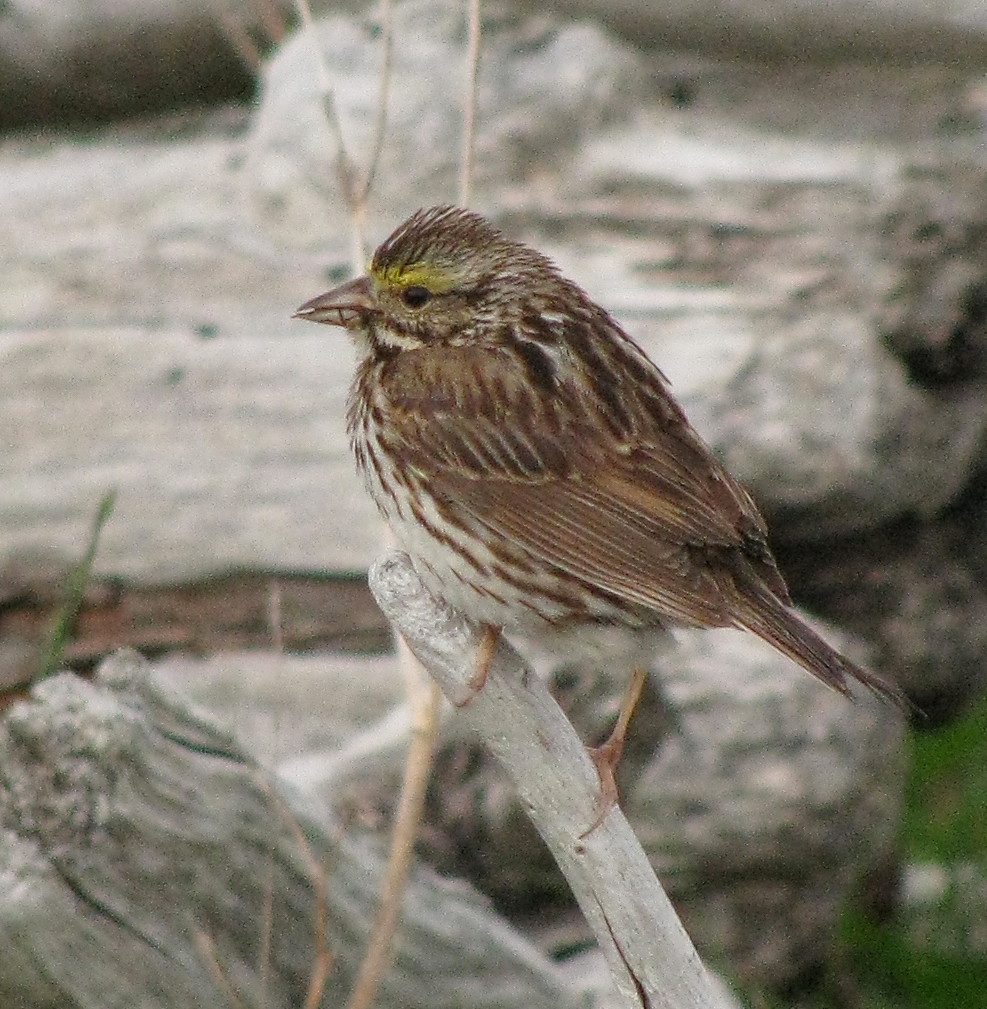
Savannah Sparrow (© Magi Nams)
Birding isn’t difficult. Anyone can do it. Like playing the piano, you start and practice and improve with time and effort. All you really need are a pair of binoculars and a field guide.
The binoculars don’t have to be expensive. My Bushnells are almost twenty years old and aren’t anywhere near the top-end models available these days, but they’ve served me well. Choose binoculars to fit your lifestyle. I like to go hiking, biking, and canoeing, so I bought a light, compact pair. I use a harness rather than a neck strap so I can have my binocs handy for hours without my neck getting sore. If you don’t already have binoculars, check out various models at a sporting goods or camera store and read reviews online to help you make a choice.
As far as field guides go, two classics for eastern North America where I live are Roger Tory Peterson’s Eastern Birds and the National Geographic Field Guide to the Birds of North America. An advantage of Peterson’s guide is that the illustrations include arrows pointing to field marks – physical features that can help you identify birds. A disadvantage is that the range maps are at the back of the book. The Nat Geo guide has the range maps on the species pages, which I like. I also like the Nat Geo guide because all its illustrations are in full colour and regional differences in plumages are shown. The maps in both guides break bird ranges into breeding range (red), wintering range (blue), or year-round range (purple). The Peterson guide is smaller and lighter than the Nat Geo guide, which is a consideration when you may be carrying a book for hours. Again, check out the options for your region and choose what suits you best.
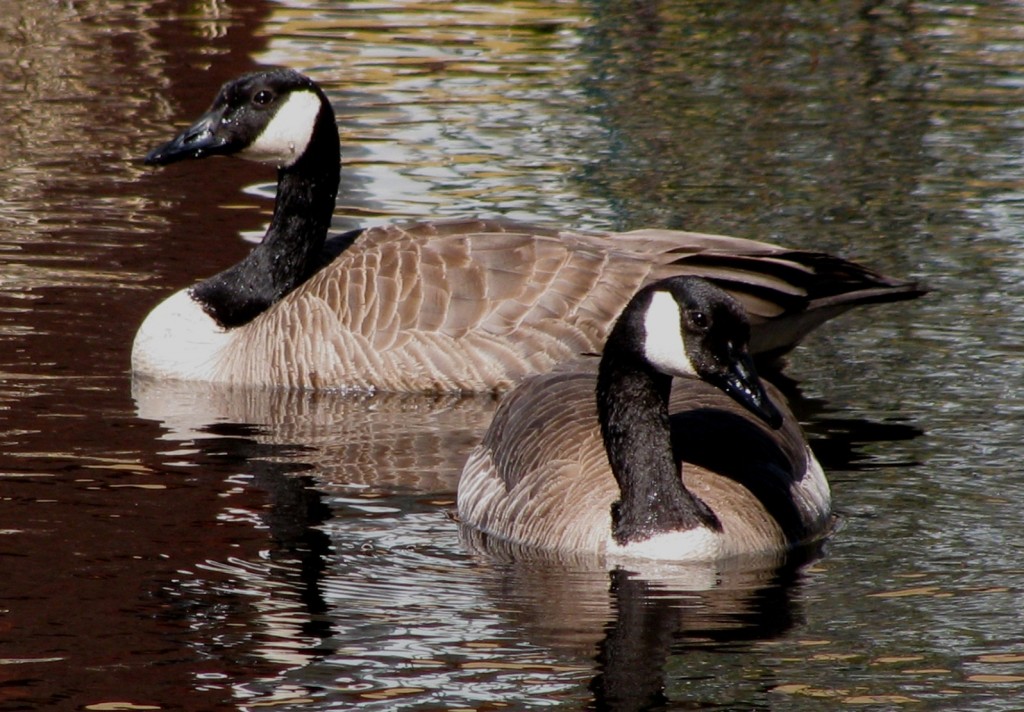
Canada Geese (© Magi Nams)
The best birding tip I can give you is to study your field guide. When you look through your guide, you’ll notice that the birds are grouped into families. This is helpful, because all the species in a family share some similar characteristics – often lifestyle and body shape. Field guides present some basic information about bird families and then provide individual species accounts that include a common name, scientific name, bird length, a physical description, sounds the bird makes, and range (where the species lives). By studying your field guide, you’ll get a general sense of the different kinds of birds that inhabit the region in which you’re birding, and their appearance and field marks. Then, when you see a new bird, you’ll more quickly place it first into a family, and then into a species.
I’ll mention two optional pieces of birding equipment. If you get really excited about birding, you may at some point want to buy a spotting scope. Mine magnifies up to 60 times, but is bulkier and heavier than my binocs. I don’t normally take it with me unless I’m driving to birding sites or have a short walk, but it’s very useful for seeing that duck away over there on the far side of the lake.
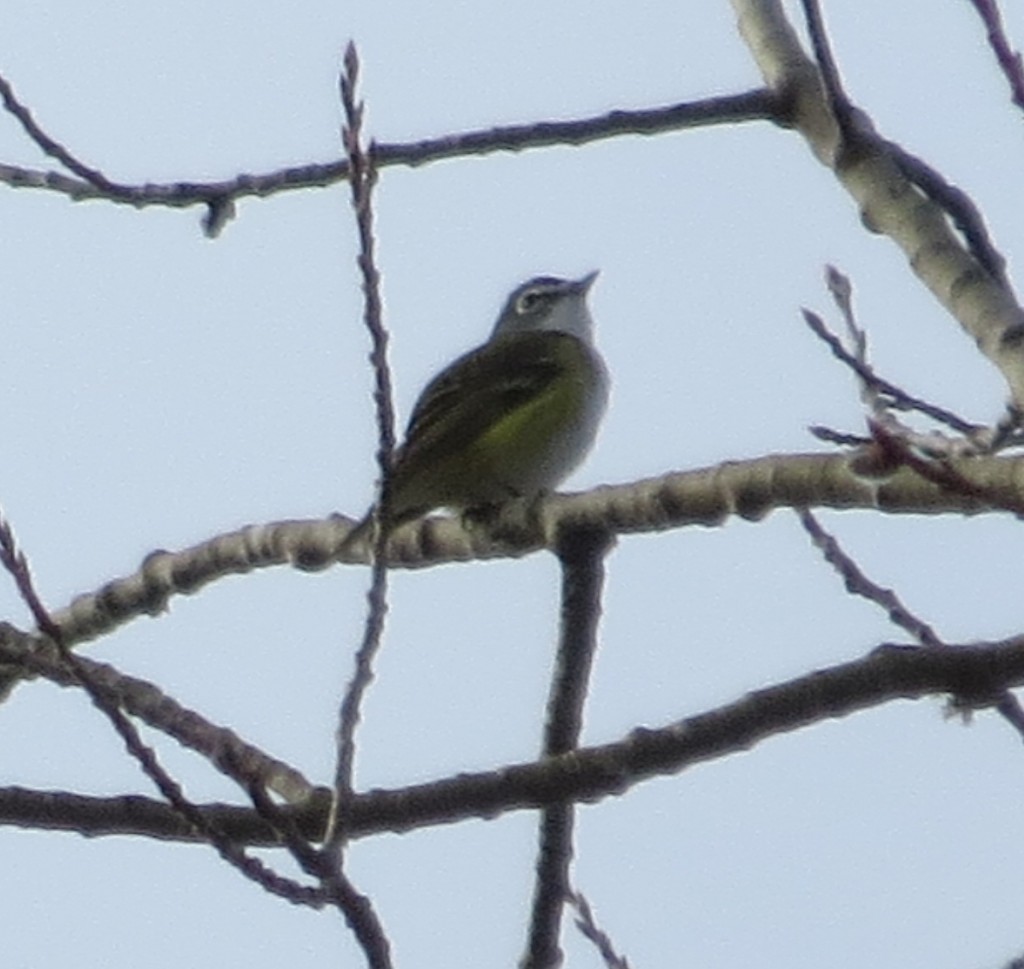
Blue-headed Vireo (© Magi Nams)
During the past two years, I’ve been carrying a small digital camera with me on birding outings. Initially, I used it to try to take pretty pictures of birds, but more recently, I’ve also used it to help me confirm identifications. For example, I went birding on Saturday morning and heard what I was sure was a male blue-headed vireo singing. I located the bird near the top of a tall deciduous tree. My binocs only magnify to 7 times, but I was fairly certain I was looking at a blue-headed vireo. Just to be sure, I zoomed in with my camera and snapped a photo. Back home, I magnified the photo on my computer and confirmed my identification.
When you’re all set with your binoculars and field guide and step out your door to go birding, there are two things you must do right off the bat. Look and listen. Break up the view in front of you into ground level, shrub level, tree level, water (if any), and sky. Scan each of those levels, particularly the tops of trees and shrubs for bird shapes and movement. Listen for songs, alarm notes, rustling leaves, wing beats – any indication of birds nearby.
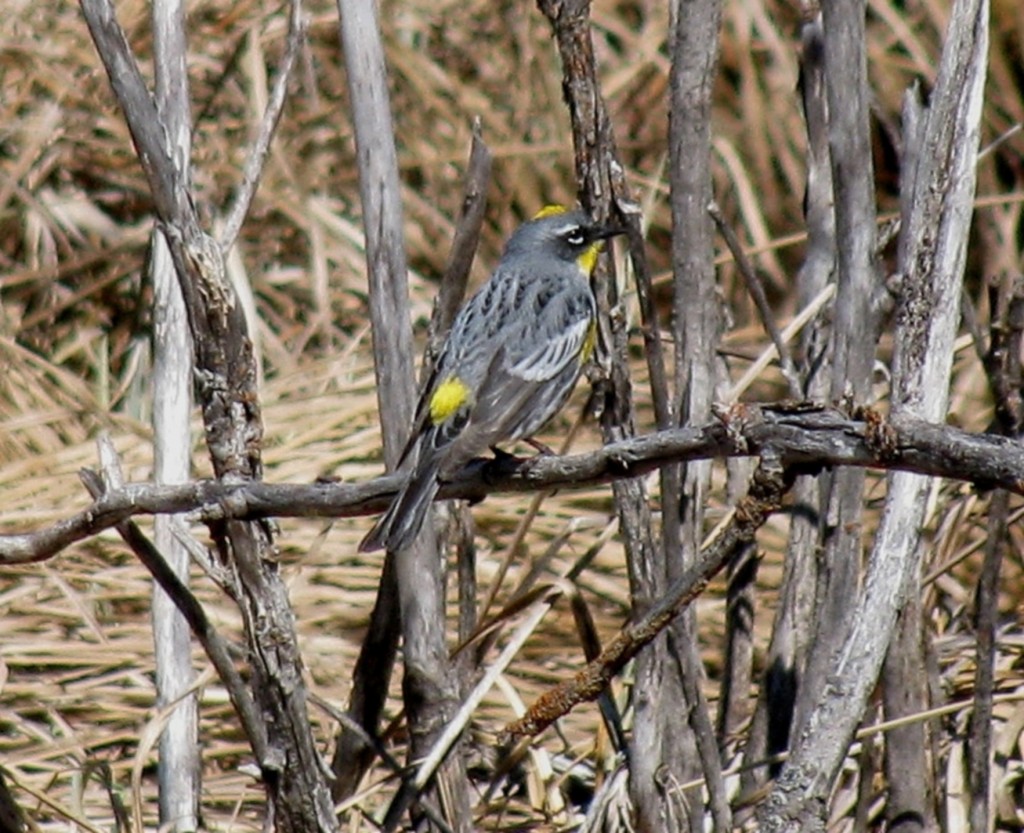
Yellow-rumped Warbler (© Magi Nams)
It’s important to be aware of birds’ activity patterns. Songbirds are most active at dawn and dusk, and it’s the male songbirds that do the singing, often from a perch high in a tree. Hawks and eagles are most active during the day, and owls, with the exception of a few species, are most active at night.
Move quietly in search of birds so you don’t frighten them off, and be patient. Stand still often and scan your surroundings, always listening for signs of activity. Bird species prefer to feed and nest in particular habitats, so take note of the habitat where you see a bird. It may be a back yard, a meadow, a deciduous forest, a coniferous forest, a marsh, a seashore, a stretch of desert sand or alpine tundra, or some other habitat.
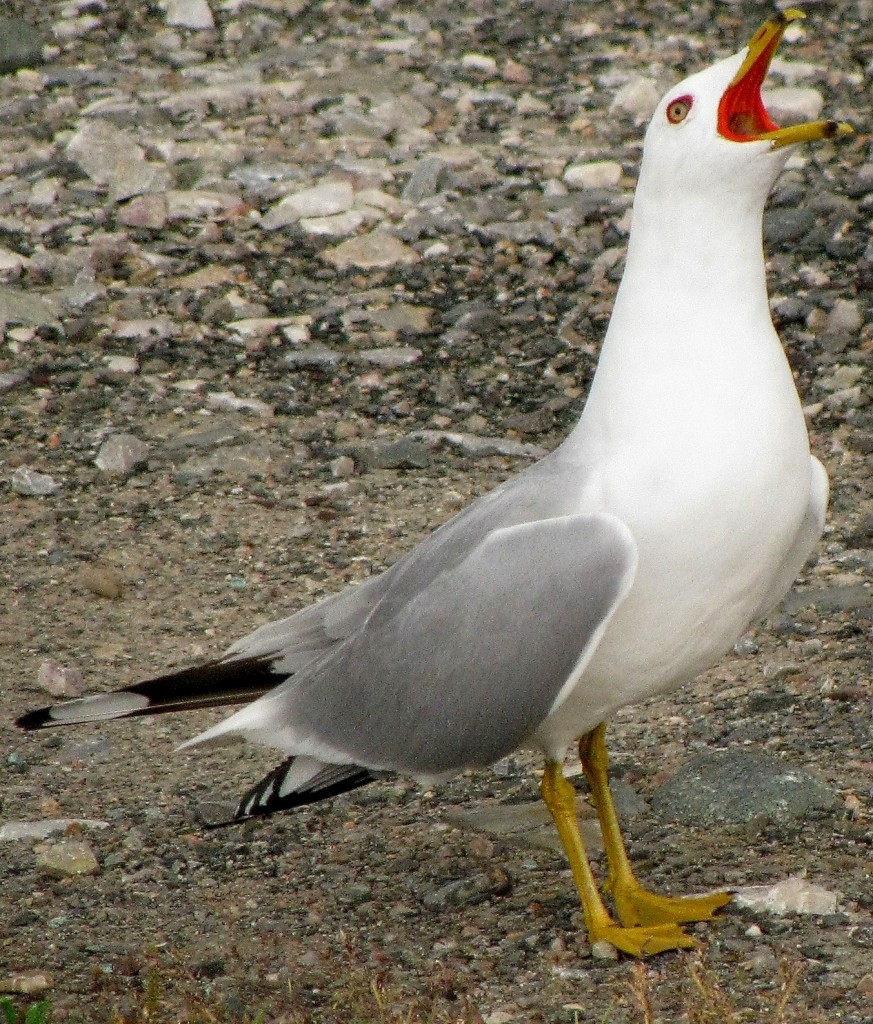
Ring-billed Gull (© Magi Nams)
When you see a bird, you’ll need to decipher the clues to its identity. Two important clues are size and shape, not just of the total bird, but of the body, the head, the tail, the beak, and the legs. Another important clue is colour, especially markings on the head and wings, and the colour of the beak, eyes, and legs.
Upon seeing a bird., make a quick assessment of overal size, shape, and colour. Then go for the head and note any markings. The bird may have a white ring around its eyes. It may have stripes on its crown or a solid-coloured cap. It may have a line of colour above or through the eyes. It may have a cheek or chin patch of contrasting colour. Its beak may be long and curved or short and thin. When you have a good idea of what the head field marks are, look at the rest of the bird. It may have bars or patches of colour on its wings. It may have spots or bars or streaks on its breast, back, or tail. Its belly or tail may be a different colour from the rest of the bird. It may have short legs or long legs, pink legs or yellow legs. Its tail may be forked or diamond-shaped, rounded or squared off. Watch the bird as long as you can, which in many cases won’t be very long. It’s important to know that for many bird species, males and females are coloured differently.
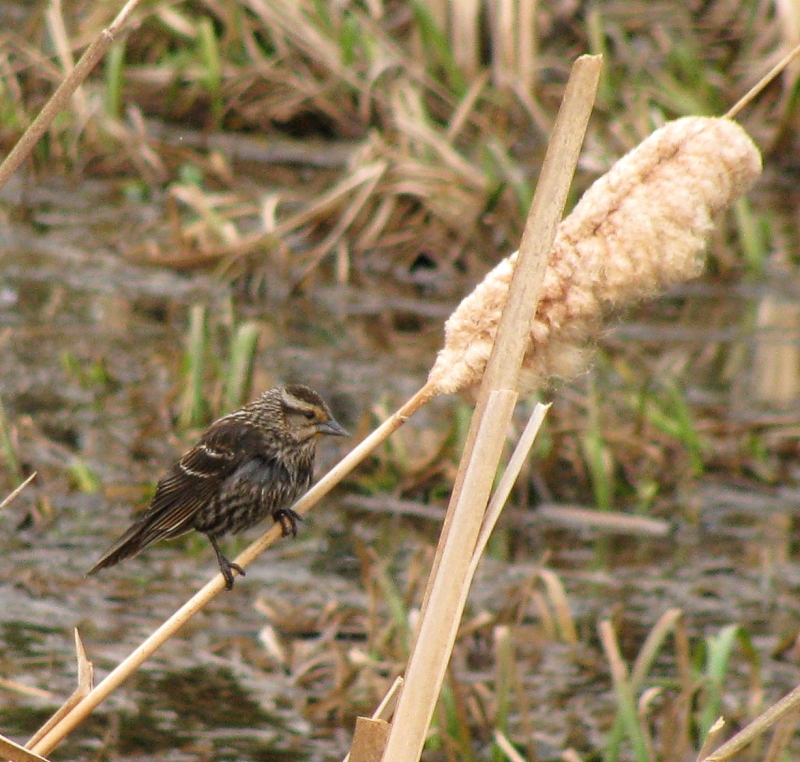
Female Red-winged Blackbird (© Magi Nams)
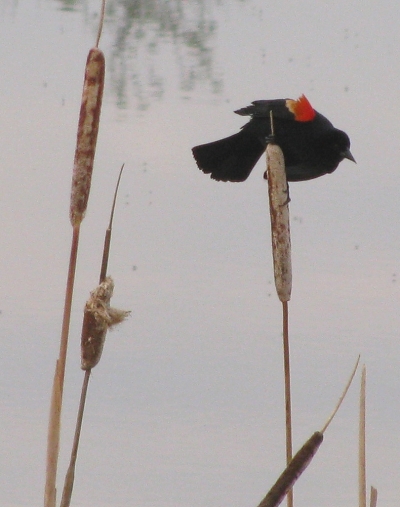
Male Red-winged Blackbird (© Magi Nams)
Sometimes, a behavioural clue can be the clincher in a bird ID mystery. Hummingbirds hover. Ruby-crowned kinglets flutter their wings while they flit about in trees. Spotted sandpipers bob their tails up and down and fly with bowed wings. American goldfinches fly in an undulating pattern and chirp ‘Po-ta-to-chip’ in flight. Watch for any unusual or repetitive kinds of movements.
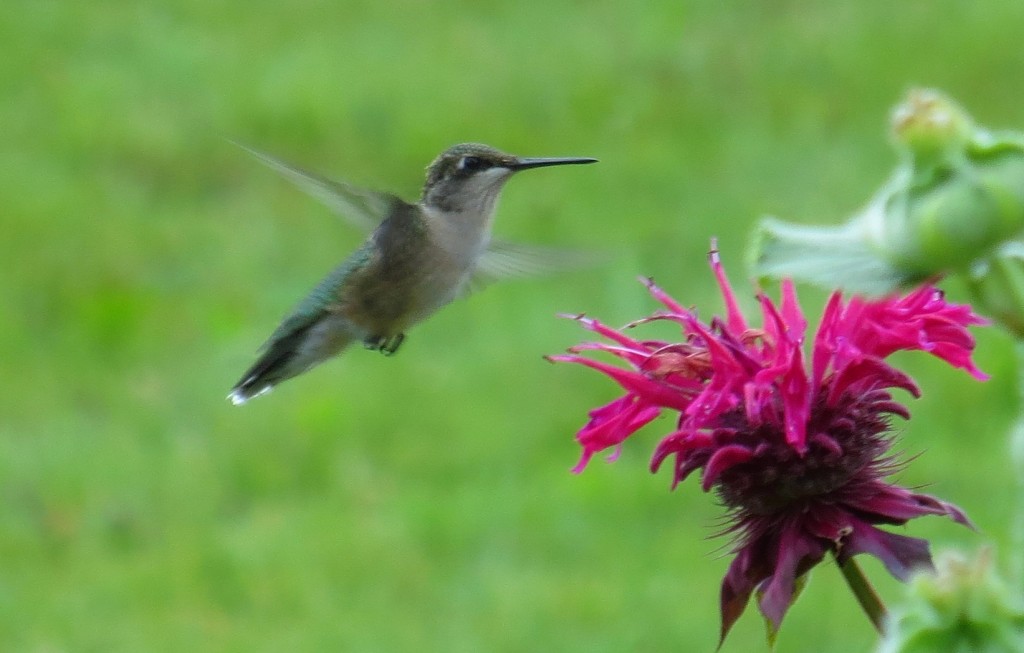
Female Ruby-throated Hummingbird (© Magi Nams)
When you have a clear picture in your mind of a bird’s field marks and behaviour, look through your field guide to find the bird. I’ll warn you right now that there will be times when you will see a bird which, according to the field guide, does not exist. Or you’ll realize that you recognized enough field marks to narrow it down to one of a few species, but not the essential field mark to ID it to species. Both of these scenarios have happened to me many times.
Or you may discover a subplot to the bird mystery. Saturday when I was out birding, I heard what sounded like a male purple finch singing its bubbly melody, but when I looked through my binoculars, the bird was not the raspberry pink colour I was expecting. It was brown and streaky, resembling a female purple finch. That didn’t make sense. Why would a female purple finch be singing like a territorial male? I snapped a photo, wondering if the bird could be some other species. Back at home, I studied the photo. Then I consulted my field guide and read in the fine print that male purple finches don’t moult into their colourful pinky-purple plumage until their second autumn. Bingo! What I’d seen and heard was a purple finch, but it was an immature male rather than a mature male.
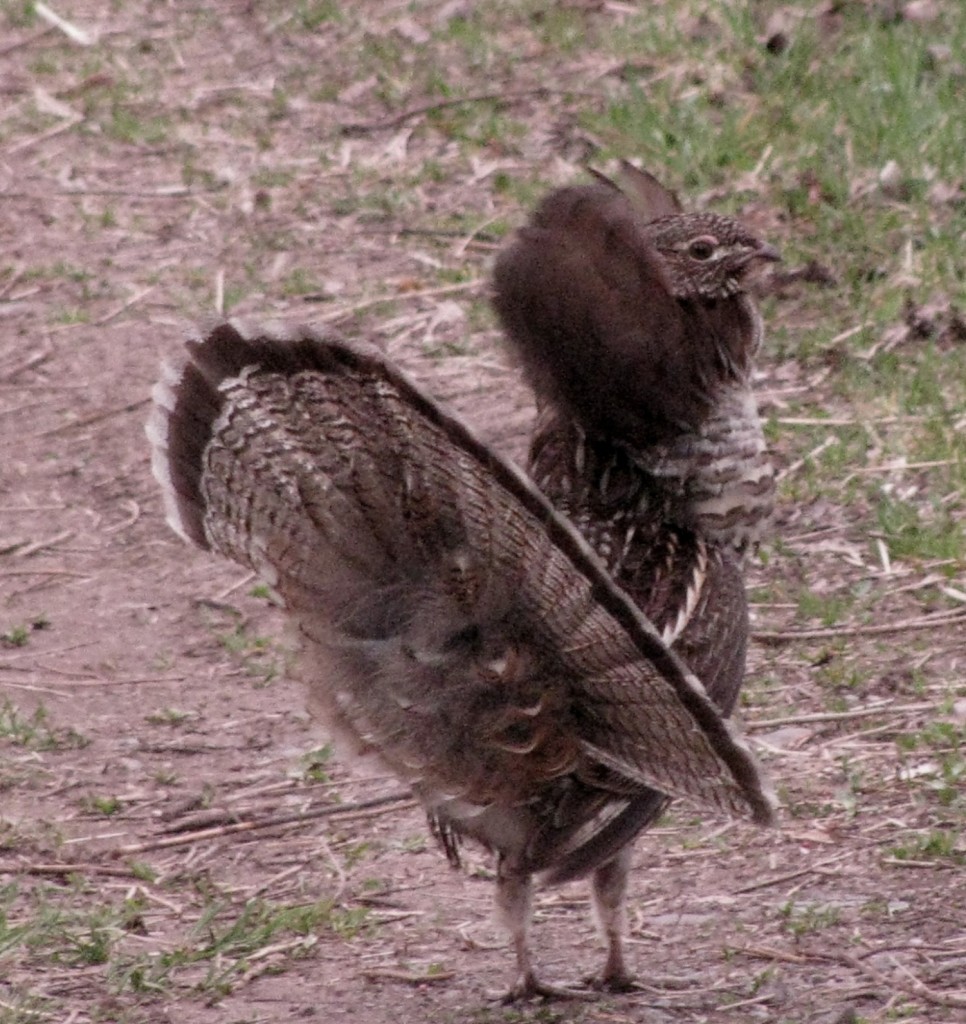
Male Ruffed Grouse (© Magi Nams)
The more time you spend birding, the better you’ll get at it and the more familiar you’ll become with the birdlife in your area. Along with identifying species, you’ll become more aware of birds’ lives. You may see birds doing breeding displays, like the male ruffed grouse in the photo to the left. You may see adult birds carrying nest-building materials or food for their young. You may see scruffy juveniles begging for food. You may see a one or more birds mobbing a predatory bird in flight.
Birds are beautiful and intriguing. The more you get to know them, the more you want to know. You can bird alone or with other birders. You can participate in organized events like the Christimas Bird Count or Great Backyard Bird Count. You can report your observations to online bird sighting directories like eBird.
Birds are also vital components of ecosystems. They occur on land, water, and in the air. Some, like kingfishers and puffins, even lay their eggs in tunnels in the soil. In order to assess the health of an ecosystem or create a management plan for a given natural site, you need to know what’s there. And what’s there includes birds. Developing birding skills enables citizens to become more aware of the richness of their natural spaces and, thus, to have a more informed opionion as to how those spaces should be managed.
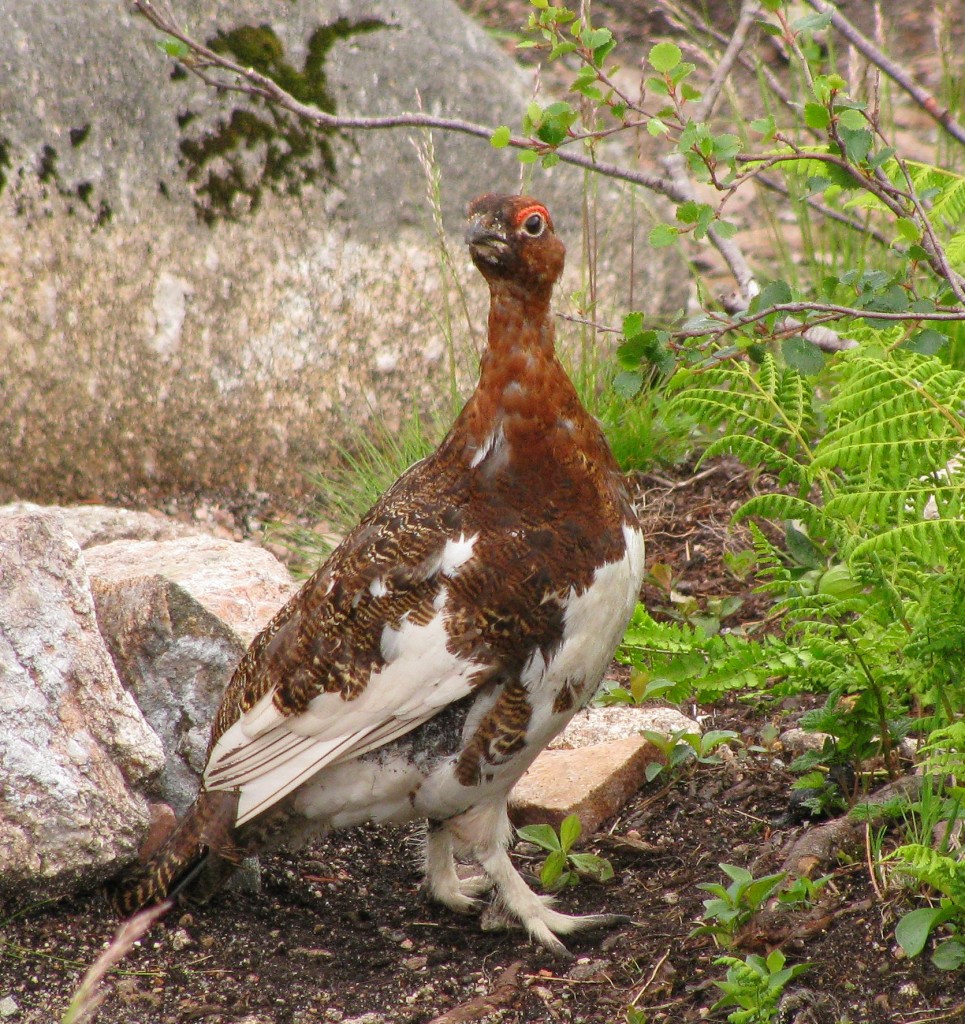
Male Willow Ptarmigan (© Magi Nams)
Birding encourages a healthy, outdoor lifestyle. In addition to providing plenty of fresh air and exercise, this mildly obsessive activity (severely obsessive for twitchers) may give you the incentive to explore places you might not otherwise explore. It definitely adds extra flavour to outdoor adventures. Last summer on our Newfoundland vacation, Vilis and I hiked up Gros Morne Mountain in Gros Morne National Park. I birded all the way up and down, and one of the highlights of the hike was spotting a gorgeous male willow ptarmigan right on the trail.
Birding is also one of the best puzzles out there. Birds rarely sit still, they tempt you with glimpses of plumage and snippets of song. Sometimes, all you get is one quick look. There are no play-back screens. No answer cards. No upside-down solutions on the same page. Identifying a bird is like fitting together another piece in the amazing jigsaw puzzle that’s the world around us.
And if you’re able to travel to somewhere else in the world, you get to start the fun all over again. Buy an exotic field guide. Start studying those field marks and range maps. Birding can add a whole new dimension to your life, one you can enjoy anywhere.
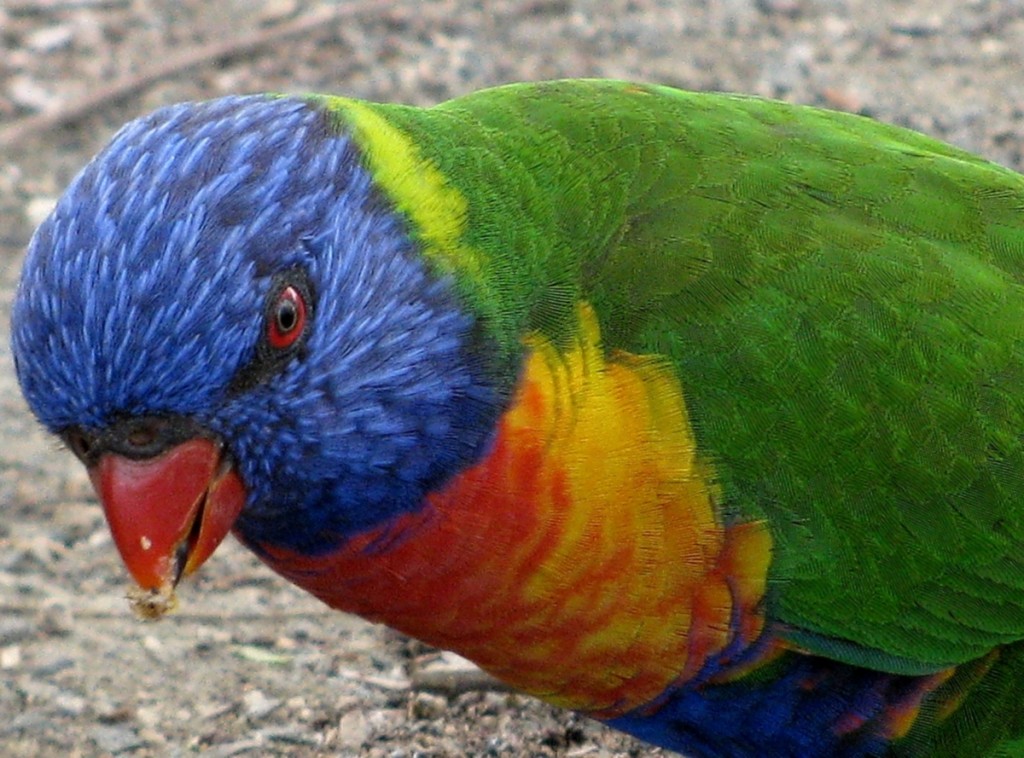
Rainbow Lorikeet (© Magi Nams)

